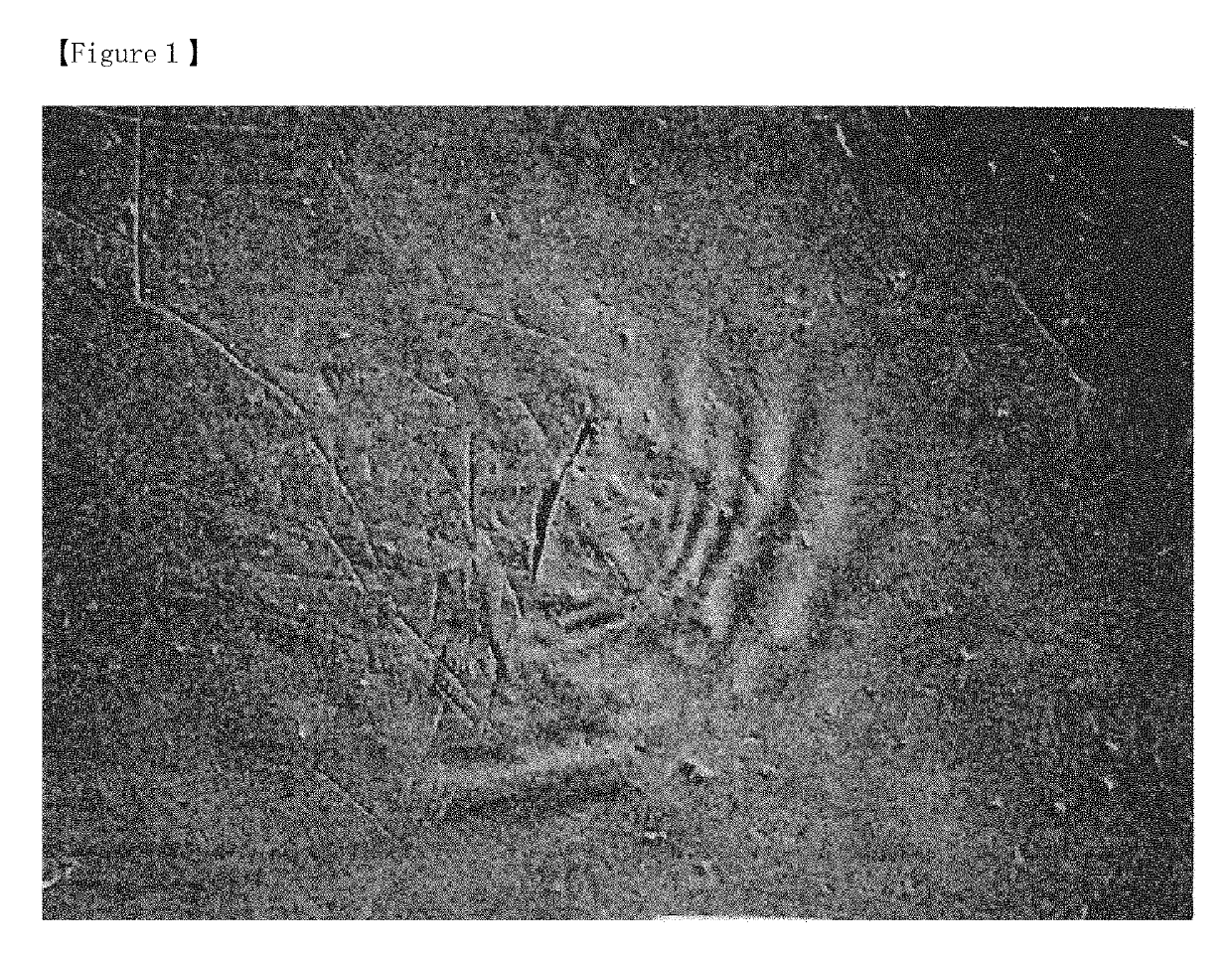Method for producing a wet-laid nonwoven fabric
a non-woven fabric and wet-laid technology, applied in the field of wet-laid non-woven fabrics, can solve the problems of weak strength of the membrane itself, decreased filtration efficiency, and inability to tolerate high pressure, and achieve the effect of easy confirmation of low-density defects
- Summary
- Abstract
- Description
- Claims
- Application Information
AI Technical Summary
Benefits of technology
Problems solved by technology
Method used
Image
Examples
example 1
[0068]
[0069]Twenty four kg of a commercially available polyester main constituent fiber (product name: EP133, manufactured by Kuraray Co., Ltd.) having a thickness of 1.45 decitex and a cut length of 5 mm, and 6 kg of a commercially available polyester binder fiber (product name: TR07N, manufactured by Teijin Fibers, Ltd.) having a thickness of 1.2 decitex and a cut length of 5 mm were introduced in 2970 kg of water, and the fibers were dispersed therein for 5 minutes by using a dispersing machine. Thus, a fiber raw material slurry having a fiber component concentration of 1% by mass was obtained.
[0070]
[0071]Water was added to the fiber raw material slurry 1 to dilute the entirety, and thus a fiber slurry having a fiber component concentration of 0.03% by mass was obtained.
[0072]
[0073]This fiber slurry was introduced into a head box of a short wire paper machine, and the fiber slurry was subjected to papermaking. Subsequently, the fiber slurry was dried with a cylinder dryer at a su...
example 2
[0084]
[0085]One upper roll between the two metal rolls of the heat calender used in Example 1 was replaced with a metal roll having a depression with a diameter of about 1 mm and a depth of about 0.6 mm at one site on the roll surface, and the nonwoven fabric roll A of Example 1 was subjected to hot press processing under the same conditions as those in Example 1. Thus, a wet-laid nonwoven fabric B for a semipermeable membrane supporting body having a basis weight of 76 g / m2, a thickness of 94 μm, a sheet density of 0.81 g / cm3, and a pressure loss of 390 Pa was obtained. No low density defect was recognized by visual inspection.
[0086]
[0087]A specimen having a width of 900 mm and a length of 1800 mm was collected from the foregoing wet-laid nonwoven fabric B for a semipermeable membrane supporting body, and this specimen was divided into 18 pieces having a size of a width of 300 mm and a length of 300 mm. Each of these was subjected to solid printing by using the same RI tester and t...
example 3
[0094]
[0095]The nonwoven fabric roll A of Example 1 was subjected to hot press processing under the same conditions as those in Example 1, by using the heat calender apparatus having a chipped metal roll used in Example 2. Thus, a wound roll having a basis weight of 75 g / m2, a thickness of 94 μm, a sheet density of 0.80 g / cm3, and a pressure loss of 370 Pa was obtained. Next, this wound roll was subjected to hot press processing again under the same conditions as those in Example 1 by using the same heat calender apparatus, and thus a wet-laid nonwoven fabric C for a semipermeable membrane supporting body having a basis weight of 77 g / m2, a thickness of 94 μm, a sheet density of 0.82 g / cm3, and a pressure loss of 400 Pa was obtained. When visually inspected, no low density defect was detected.
[0096]
[0097]A specimen having a width of 900 mm and a length of 1800 mm was collected from the foregoing wet-laid nonwoven fabric C for a semipermeable membrane supporting body, and this specim...
PUM
| Property | Measurement | Unit |
|---|---|---|
| pressure | aaaaa | aaaaa |
| melting point | aaaaa | aaaaa |
| length | aaaaa | aaaaa |
Abstract
Description
Claims
Application Information
 Login to View More
Login to View More - R&D
- Intellectual Property
- Life Sciences
- Materials
- Tech Scout
- Unparalleled Data Quality
- Higher Quality Content
- 60% Fewer Hallucinations
Browse by: Latest US Patents, China's latest patents, Technical Efficacy Thesaurus, Application Domain, Technology Topic, Popular Technical Reports.
© 2025 PatSnap. All rights reserved.Legal|Privacy policy|Modern Slavery Act Transparency Statement|Sitemap|About US| Contact US: help@patsnap.com



